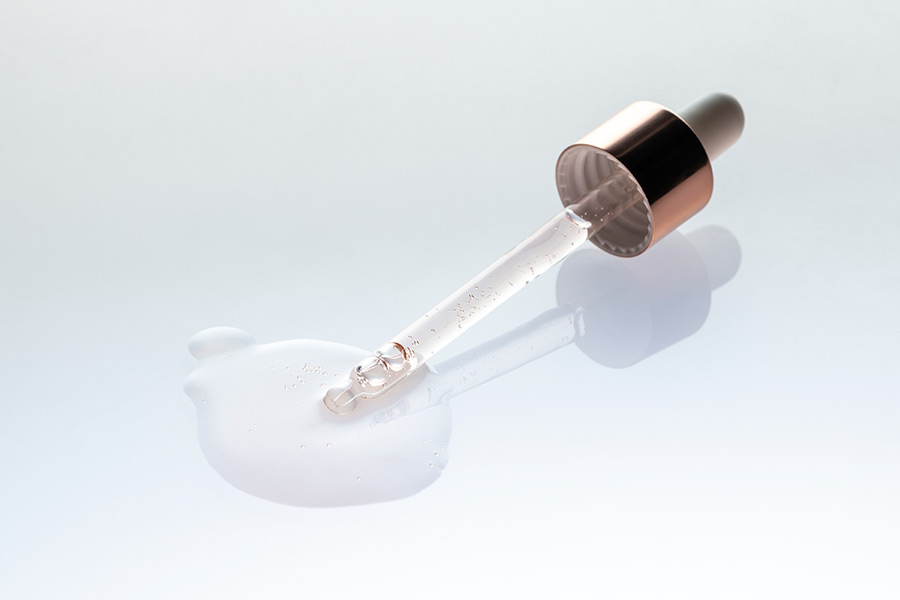Hyperpigmentation or dark marks that are visible on the skin surface is one of the most common skin conditions affecting us today. There are numerous causes for visible pigmented lesions:
Sun exposure or UV damage.
Hormonal changes such as pregnancy or the contraceptive pill.
Inflammatory skin conditions.
Trauma to the skin.
Side effects due to skin treatments or medication.
Genetic predisposition.
Unfortunately, hyperpigmentation is difficult to treat, and we should rather approach this skin concern with the view of trying to control it as opposed to completely removing it.
“A scientist could spend their whole life on the study of the melanocyte and not fully understand it.” – Dr Pugliese.
What this means very simply is that the formation of pigment and its overproduction involves multiple complex processes involving different enzymes and a cascade of pathways throughout the different layers of the skin. So effective management will include a combination of approaches to achieve best results:
Topical regimes.
Chemical peels.
Fractional lasers or IPL (Intense Pulse Light).
Dermapen MD or needling.
Sun avoidance.
However, we can achieve visible and noticeable differences with the latest in brightening and lightening skincare ingredients and treatment approaches.
Most topical regimes and skincare ingredients are focused on preventing the activity of the enzyme tyrosinase which has been found to be a vital enzyme in the skin cells that allows pigment to be formed by melanocytes or pigment producing cells. Further approaches include the breakdown of visible pigmented skin cells and the disruption of cell membranes.
Depigmenting Skincare Ingredients
Here is a list of my go-to ingredients when approaching hyperpigmentation with a topical regime:
The most important topical ‘ingredient’ to control hyperpigmentation is an effective sunscreen with a SPF of 30 or higher that contains zinc oxide and/or titanium dioxide. To achieve best results, we should apply our sunscreen daily irrespective of the weather.
Arbutin is one of the most widely prescribed skin-lightening and de-pigmenting ingredients worldwide. Arbutin is a naturally occurring plant derived compound found in the dried leaves of a number of different plant species including bearberry, blueberry, cranberry, and pear trees. Arbutin works by inhibiting tyrosinase activity which is an enzyme needed for melanin or pigment formation. It also inhibits melanosome maturation which slows down the process of pigment formation. It is important to note that controlled studies are lacking and that several studies have shown that arbutin is less effective than kojic acid for hyperpigmentation.
Vitamin C is one of my hero ingredients and works in the skin by acting as an antioxidant, an inhibitor of tyrosinase and stops various steps in the skin cells that produce melanin or pigment. The most stable forms of topical vitamin C and those that have the greatest absorption is lipid soluble Vitamin C such as Ascorbyl Tetraisopalmitate and Magnesium Ascorbyl Phosphate.
A study compared 5% ascorbic acid and 4% hydroquinone in 16 female patients with melasma and found 62.5% and 93% improvement respectively. Side-effects were present in 68.7% with hydroquinone versus 6.2% with ascorbic acid. Although, HQ showed better response, vitamin C may play a role as it is devoid of any side-effects, can be used alone or in combination therapy.
Vitamin E has been shown to have the ability to dramatically increase the skin’s photo-protective effects. Furthermore, Vitamin E prevents melanin or pigment formation by interfering with the normal membrane functions of melanin cells and inhibition of the tyrosinase enzyme. What is interesting to note is that studies have shown that the combination of using topical vitamins E and C will provide better results compared to single vitamin treatment groups.
Clinical studies using 2% niacinamide have shown that it significantly reduces the total area of hyperpigmentation and increases skin lightness after 4 weeks of treatment. Vitamin B3 works by inhibiting a number of enzymes that are needed to produce pigment in our skin cells.
Kojic acid is a naturally occurring ingredient derived from different fungi including Acetobacter, Aspergillus, and Penicillium. It reduces hyperpigmentation by inhibiting the production of free tyrosinase and is also works as a potent antioxidant. In most topical formulations Kojic acid is used in concentrations ranging from 1% to 4%.
Retinoids which are derivatives of vitamin A are used to treat various pigmentation disorders like melasma and post-inflammatory hyperpigmentation. It works by inhibiting the tyrosinase enzyme and causes pigment in the skin cells to disperse or breakdown. My go-to ingredient when it comes to Vitamin A is Hydroxypinacolone Retinoate (HPR). HPR is the newest member of the superhero anti-aging ingredients which binds directly to the all-important retinoic acid receptors in the skin. Furthermore, it has been shown to be one of the most stable forms of vitamin A and also the least sensitising, allowing one to use higher concentrations with fewer side effects.
Conclusion
The ultimate goal we need is to approach pigmented lesions with the understanding that control and treatment is more effective than attempting to eliminate hyperpigmentation. We will find best results starting here with a combined treatment approach. Daily use of an effective sunscreen with topical products that contain specific lightening ingredients combined with other treatment modalities will yield the greatest results.
I hope that the above has helped you when looking for a topical product to treat hyperpigmentation.
Kind regards,
Dr Alek Nikolic
References:
- Arbutin: mechanism of its depigmenting action in human melanocyte culture. Maeda K, Fukuda M. J Pharmacol Exp Ther. 1996 Feb; 276(2):765-9.
- DeoxyArbutin: a novel reversible tyrosinase inhibitor with effective in vivo skin lightening potency. Boissy RE, Visscher M, DeLong MA. Exp Dermatol. 2005 Aug; 14(8):601-8.
- Effects of vitamin C vs. multivitamin on melanogenesis: comparative study in vitro and in vivo. Choi YK, Rho YK, Yoo KH, Lim YY, Li K, Kim BJ, Seo SJ, Kim MN, Hong CK, Kim DS. Int J Dermatol. 2010 Feb; 49(2):218-26.
- Inhibitory effect of magnesium L-ascorbyl-2-phosphate (VC-PMG) on melanogenesis in vitro and in vivo. Kameyama K, Sakai C, Kondoh S, Yonemoto K, Nishiyama S, Tagawa M, Murata T, Ohnuma T, Quigley J, Dorsky A, Bucks D, Blanock K. J Am Acad Dermatol. 1996 Jan; 34(1):29-33.
- Insight into skin lightening cosmeceuticals for women of colour. Badreshia-Bansal S, Draelos ZD. J Drugs Dermatol. 2007 Jan; 6(1):32-9.
- Treatment of melasma using kojic acid in a gel containing hydroquinone and glycolic acid. Lim JT. Dermatol Surg. 1999 Apr; 25(4):282-4.





Hello Dr Alek, I just submitted my details for analysis. Your questionnaire did not accommodate my age, 58. I am a South African currently living in Ghana. My SA number will therefore not work. All the ingredients you work with have worked well for me. Unfortunately, FC, a Ghanaian cosmetics company no longer produces their products. They make more money producing cosmetologists. I look forward to working with you. My friend Shumi Dantile introduced me to RegimA today. I have been admiring her complexion on Facebook. With Gratitude. Wanita Kawa +233249292565 wk15454@gmail.com